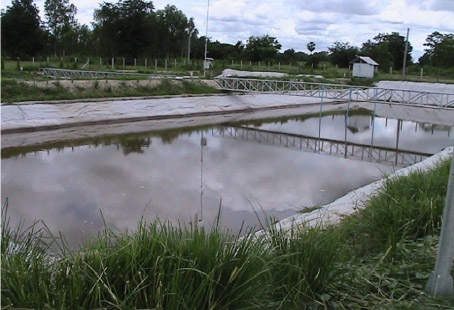Effect of Water Quality on Infiltration Rates from the Ponding Method of Managed Aquifer Recharge: A Case Study from Ban Nong Na, Phitsanulok, Thailand
Main Article Content
Abstract
The shallow groundwater in Bangrakum District, PhitsanulokProvince, situated within the Lower Yom River Basin, Thailand has been heavily pumped for growing rice all year round. During the past decade static water levels within the gravel, sand and silt aquifers have decreased to critical depths of up to ten meters below the ground surface. Ponding method of Managed Aquifer Recharge (MAR) is being trialed as solution to groundwater depletion of the area. The infiltration test was conducted in Ban Nong Na sub-watershed consisting of recharge pond A with bottom area of 660 m2 and using synthetic filter sheets at the bottom and pond B with bottom area of 600 m2 and not using synthetic filter sheets. The objectives of this study are
to investigate effect of water quality to infiltration rates and efficiency of synthetic filter sheets in the field scale. The test under constant head conditions over a period of 30 days. The turbidity of raw water was ranging of 12 to 287 NTU (average turbidity of 89.9 NTU). Infiltrated water was calculated by water budget equation and total volume infiltrated water of pond A and B during the experiment were 4,884 and 3,953 m3 respectively Averaged infiltration rates of pond A and B were 0.26 and 0.22 meter per day respectively. The infiltration rates of pond A and B could be categorized into 4 stages, namely; stage 1: the infiltration rate increases, stage 2: the infiltration rate rapidly decreases stage 3: the infiltration rate decreases; and stage 4: the infiltration rate gradually decreases. The last stage (stage 4) of the infiltration readings indicate the approach of the clogging of the pond bottom. Using and not using synthetic filter sheets at the bottom of the pond show very small difference in infiltration rate of 0.04 m/d. The turbidity of the infiltration water should be limited to less than 50 NTU. Further field experiment is needed over longer periods to provide firmer assurance on the water quality requirements for
MAR.
Article Details
Published articles are under the copyright of the Environment and Natural Resources Journal effective when the article is accepted for publication thus granting Environment and Natural Resources Journal all rights for the work so that both parties may be protected from the consequences of unauthorized use. Partially or totally publication of an article elsewhere is possible only after the consent from the editors.

